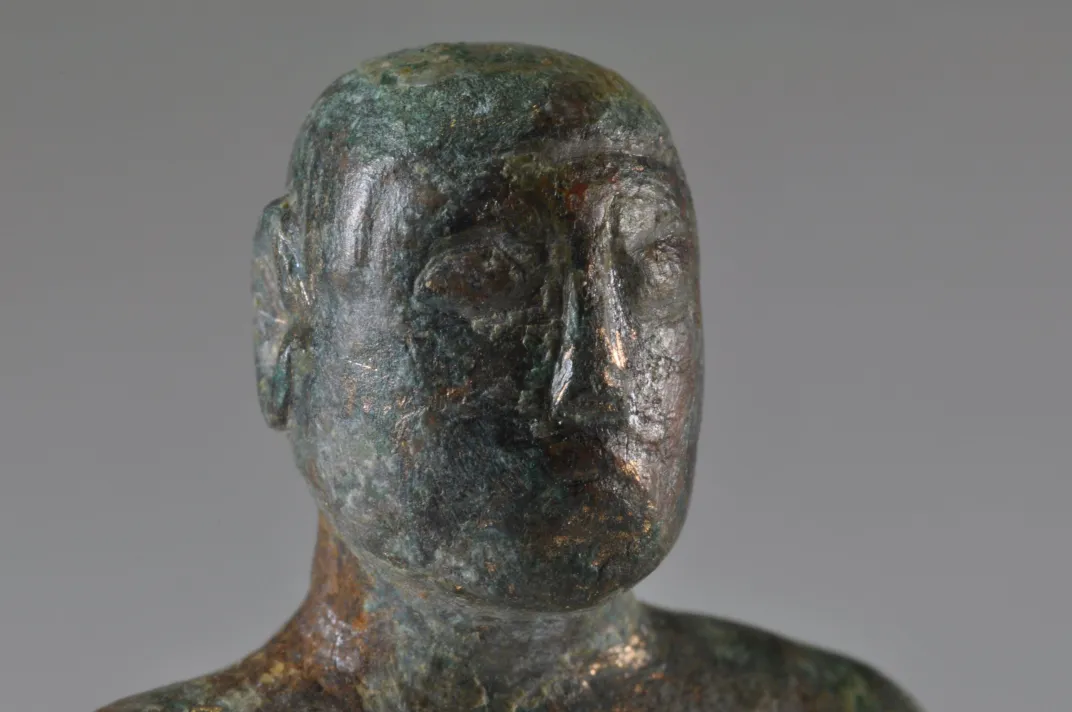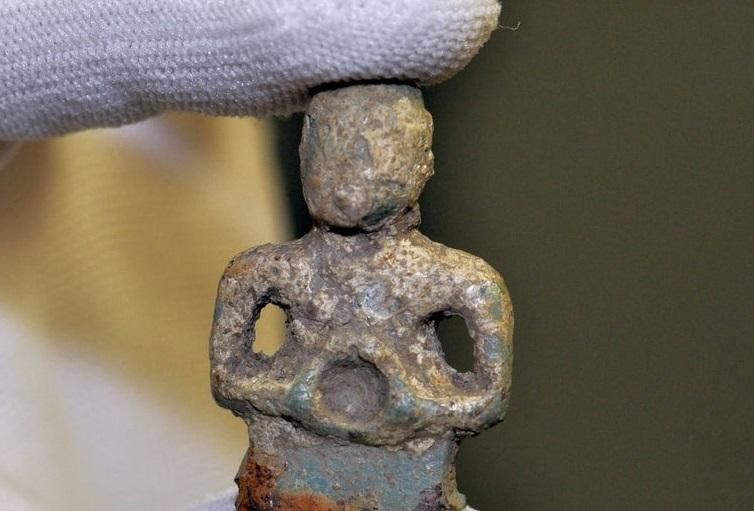Did Early Britons Sport Mullets and Mustaches?
A first-century figurine found in England may reveal the ancient roots of a much-maligned hairstyle
:focal(400x262:401x263)/https://tf-cmsv2-smithsonianmag-media.s3.amazonaws.com/filer/97/6f/976f3409-db02-4645-a9ff-bb53f6d535b3/mullet_man.jpg)
Mustaches paired with mullets are perhaps most widely associated with the 1970s and ’80s. But a new find in England suggests that the outdated hairstyle traces its roots back further than a few decades: As Lanre Bakare reports for the Guardian, a tiny first-century figurine discovered at the Wimpole Estate in Royston, about 50 miles north of London, mirrors this seemingly modern grooming choice in remarkable detail.
Shannon Hogan, an archaeologist with the National Trust, which located the statue in partnership with Oxford Archaeology (OA) East, tells the Guardian that the figurine could “very well reflect the face of your average man.”
Though it’s possible the copper alloy figurine’s neat haircut reflects the technical limitations of the craftsmanship of the time, Hogan says that certain choices, such as the absence of a beard, were deliberate.
“We have so few visual or written depictions from the Romans of what the native people looked like,” she adds, “so it’s tempting to say he was designed based on what people looked like or what the current styles or current trends were then.”

Researchers discovered the statue while excavating a late Iron Age to early Roman rural settlement in 2018, according to BBC News. The figure holds a metal ring that probably once contained a now-lost decorative inlay; it appears to have served as the handle of a spatula used to mix medicines or wax for writing tablets.
Maev Kennedy of the Art Newspaper reports that the two-inch sculpture was found heavily corroded, but careful cleaning revealed its detailed craftsmanship.
Much about the figurine’s origins remains uncertain. The researchers are unsure whether it was made by Roman or Celtic people, though Hogan says in a statement that features such as the man’s oval eyes are Celtic in appearance. It’s also unclear whether the sitter is intended to be a human or god.
“He hasn’t been likened to any particular Celtic deities that we know of but then there are some that don’t have visual depictions,” Hogan tells the Guardian. “So he could be a deity, or he could be just an anthropomorphic piece of the tool which he was a part of.”
The Wimpole site has been continuously occupied and farmed for more than 2,000 years, per the Art Newspaper. It is home to Wimpole Hall, the largest country house in Cambridgeshire, and still has a working farm on its grounds. Some of the estate’s buildings were designed by John Soane, a well-known architect of the late 17th and early 18th century.

Archaeologists carried out the 2018 excavation ahead of construction of a new visitor center at the country manor. The dig found a variety of agricultural uses of the land over the centuries, in addition to evidence of trading links, with goods including coins, horse harness fittings, cosmetic implements, Roman military uniform fittings and brooches all uncovered.
OA East has been involved in archaeological research at the estate since the 1990s, revealing finds including the remains of medieval trackways and a Jacobean stable. The restoration of an 18th-century gothic tower at the estate that was originally designed to look like a medieval ruin won a 2016 European Union Prize for Cultural Heritage / Europa Nostra Award.
During the Roman period, the site was located between two Roman roads, which may have made it a significant location for trade activity. Chris Thatcher of OA East says in the statement that the figurine was probably owned by someone of power and influence.
“Finds such as this give a rare and fascinating insight into aesthetics and symbolism in the latest Iron Age,” he explains. “The fact that he was found on a site with so much other evidence for it being a local hub is wonderful and appropriate.”
/https://tf-cmsv2-smithsonianmag-media.s3.amazonaws.com/accounts/headshot/Livia_lg_thumbnail.png)
/https://tf-cmsv2-smithsonianmag-media.s3.amazonaws.com/accounts/headshot/Livia_lg_thumbnail.png)